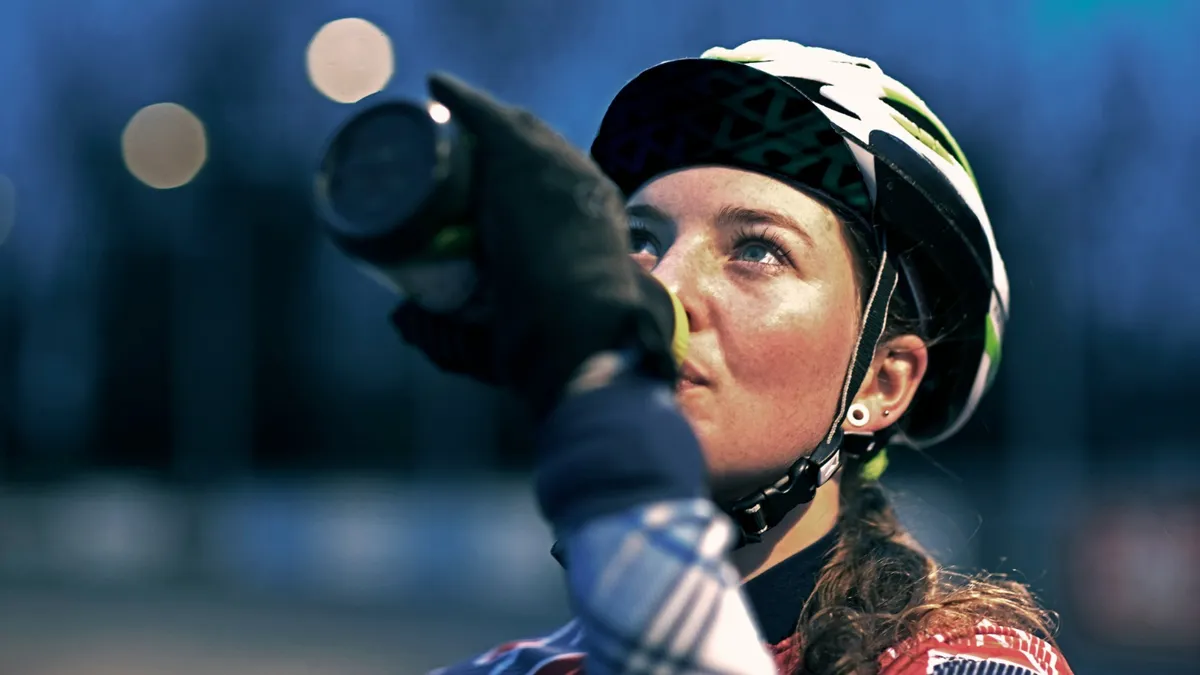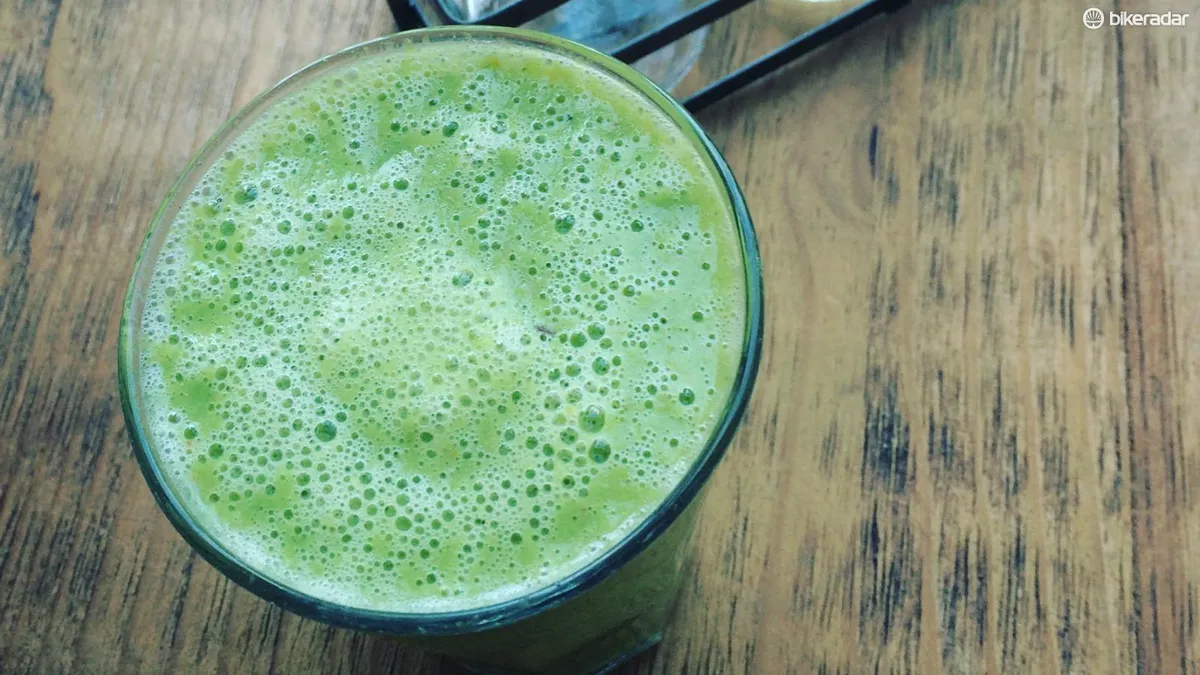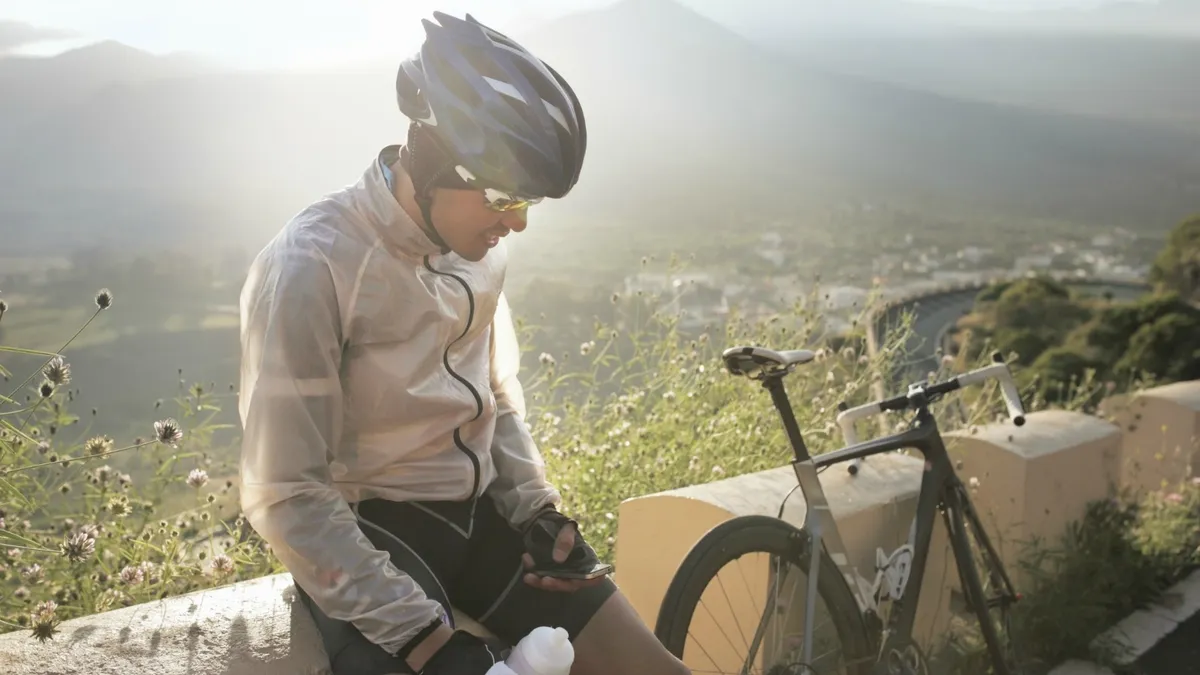This is a sponsored post in association with A1 Coaching.
- Click here for free access to A1 Coaching’s winter training video series
- Know your numbers and set your threshold
- Smart weekly training for maximum performance
Often the major influence on a rider’s performance is not talent, but available training hours. However, if you’re limited to less than 10 hours per week, there is another strategy you can combine with high-intensity training to compensate for the lack of time. This is high-quality recovery.
There is an added bonus if you work in a sedentary job, because you can turn this into a positive by re-labelling some work time as ‘recovery time’!
Resting and fitness gain
The main principle to keep at the forefront of your mind is that training hours allow for the possibility of increased fitness levels, but improvement only occurs with proper recovery.
Therefore, the process of getting fit happens when you’re resting and adapting to the training – not when you are actually training.
This is extremely important and, as a coach, I frequently have problems with highly-motivated athletes who struggle with the idea of ‘sacrificing’ training time for high-quality recovery. So, I am going to repeat it to ensure that it sinks in: ‘The process of getting fit happens when you are resting and adapting to the training – not when you are actually training’!
Therefore, there will be times when putting your feet up and taking a nap will bring more fitness than another hard training session, which might lead to just more fatigue and loss of form.
Although recovery is important for all athletes, full-time workers need to place an increased emphasis on it. The training system I am advocating (low volume, high intensity) is predicated upon good recovery. This is one area where macho doesn’t work – recovery is one of the ways we’ll make huge gains on those who are attempting to pack high volume training into an already busy life schedule.
On the other hand, get recovery wrong and it will compromise your hard efforts on the bike and can eventually lead to injury, tiredness and general lack of enthusiasm.
Recovery strategies – passive and active
We can look on recovery strategies as being passive or active:
Passive recovery
Passive recovery involves resting. While a nap after a hard session isn’t an option for most of us, a regular good night’s sleep is the key passive recovery strategy – there is nothing you can do better to recover than sleep well.
Sleep is the time when the body recovers and builds the most, and crucial hormones such as testosterone are more freely released into the system. It should not be messed around with. It’s also free and pleasant, so make the best of it!
You will know you are getting enough sleep when you wake up naturally rather than to an alarm. If you do wake up un-naturally, and especially if you don’t feel refreshed when you do, then try to get to bed earlier.
Mental relaxation, in whatever way possible, is another important passive recovery strategy. Cortisol is the main ‘fight-or-flight’ hormone produced by the body in response to stress, but it isn’t meant to be a constant drip-feed into our system and too much is damaging.
Our brain is unable to distinguish between cortisol released by mental or physical stress. For example, when our cortisol level is elevated the ‘delta phase’ of sleep is compromised and it is this ‘deep sleep’ which produces most repair and recovery. This is just one example of how mental relaxation can help regulate cortisol and aid recovery.
Conversely, there will be times when work, family and life in general unavoidably produce high amounts of stress and added cortisol. At these times it may be necessary to reduce our training load somewhat in order to lessen overall stress levels.

Active recovery
There are a number of active recovery strategies such as stretching, foam rolling, and massage. Try to incorporate these into your weekly routine as much as possible.
Light exercise, such as zone 1 cycling or gentle swimming, are also useful during times of heavy training as they help keep the muscles from getting stiff and sore.
Good nutrition can also be looked at as an active recovery strategy because we should consciously regulate it as part of our training.
Poor nutrition, on the other hand, is yet another stressor. Dietary stress from refined, processed foods which are high in calories but nutritionally void, add to our weekly stress allowance.
The main rule is to eat food which has gone through as little processing as possible – plain, unprocessed food. For example, a glance at the label of any commercial recovery drink or sports bar reveals a list you will hardly be able to pronounce. Much of these are not real foods.
It is also possible to get the benefits of good food for a fraction of the cost and without ingesting an array of unknown substances. For example, use home-made fruit smoothies with nuts and hemp as a recovery drink. And substitute sports bars with dates, bananas or similar high glycaemic index (slow release) fruits while on the bike.
One exception, where commercial recovery products should be considered, is after a hard workout. This is the ’20-minute recovery window’ when the body is most prepared to absorb nutrients – particularly protein – and begin the re-building process. It has three main stages:
- Rehydrate: no matter how much you drink on the bike you will usually be dehydrated at the end of a session and you should rehydrate with water (between 250ml and 500ml) and an electrolyte mix if you have sweated a lot.
- Top up your carbohydrate stores: try to get 30g of carbs in, which normally equates to one medium banana or one energy bar.
- Now it’s time for protein and this can be taken on-board in liquid/shake form or bar form (or both).
You’ll often see pros on TV using these steps. It’s particularly noticeable after a hot mountain stage. The first thing they go for is water and electrolyte mix. Then during their post-stage interview they get their carbs in, often from a can of Coke. They save their protein shakes until last. The human body finds it hard to break down protein in big quantities. This is why the protein step comes last – they are not delaying the hydration and carb steps.

Recovery is more than a marginal gain
We sometimes get distracted from pursuing ‘marginal gains’ and ignore the huge performance benefits from more attainable sources. Recovery is one of these and the professionals always knew this: ‘Never stand when you can sit; never sit when you can lie down; never stay awake when you can sleep.’
In summary, the benefits of recovery:
- It increases our response to training – in other words, fitness gain
- It helps have you be prepared for the next training session
- It rebalances the hormonal levels
- There is less chance of motivation loss
- The risk of sickness or injury are greatly reduced
- It improves motivation and readiness to train
- Stress is reduced and you have a recovery routine that will help keep you focused
- Overall, it helps to make your cycling more enjoyable and fruitful
Regulating your recovery
There are various signs that will tell you if you need more recovery: raised resting heart rate; constant tiredness; lack of motivation and enthusiasm; irritability; drop in performance, and so on. If you notice these you should rest more.
However, all too often we can be our own worst enemy when it comes to recovery – we get too absorbed in training hard to actually realise that we need more rest.
Some software analytics can help with this. An invaluable resource is a partner, work colleague, friend or coach who notices you becoming more irritable and can give you a gentle word of advice.
Whichever way you do it, it’s wise not to leave recovery strategy entirely to your own judgment!
A final word
I began the series by saying that, as head coach at A1 Coaching, I was on a mission to dispel the culture of misinformation that has built up around training advice, principles and philosophies.
I outlined how I was going to challenge some taken-for-granted assumptions and explain to you how doing things differently may help transform you from the rider you are to the rider you could be.
And, I said that I knew these approaches work because of my experience of working with our clients.
I hope you're enjoying the series and are learning from it. I do strongly believe that, within these articles, there exists a thinking and framework for your potential cycling transformation.
Team Sky has popularised the expression of ‘accumulated marginal gains’. While this holds true for professional riders there is much more scope for most amateur cyclists to progress.
My goal is to equip you with the knowledge to make these big gains and change you as a bike rider. Application of the principles I am advocating is necessary for this.
A question I get asked all the time is: “What one single thing can I do to improve my performance”? Trawling through the accumulation of clients’ data reveals one obvious answer – the most important session for any athlete is the one they don’t miss. Consistency and strict adherence to training guidelines, which are built on sound principles and planning, wins out every time.
